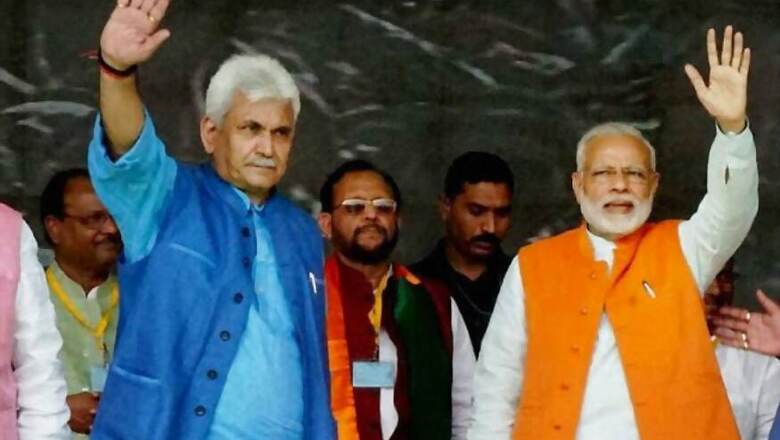
views
Lucknow: Union minister Manoj Sinha is now the frontrunner for the post of BJP’s chief minister in Uttar Pradesh. But going by the disciplinary standards that the Rashtriya Swayamsevak Sangh (RSS) and its political offshoot, the BJP, expects of its members, Sinha stands out as a rebel. He has been so since his days as a member of the ABVP, the student wing of the RSS.
Sinha, a native of Ghazipur district in eastern UP, gained admission to the prestigious BHU in mid-70s, the thick of the Emergency era. His association with the ABVP soon brought out the political activist in this engineering undergraduate.
Recalling the turbulent days, a BJP leader, who was then a state-level ABVP functionary, said: “Those were the days of hectic political activity. The fight against Emergency had seen the coming together of various political forces against Indira Gandhi and the Congress. Socialists and the Sangh Parivar had come together. Some within the Sangh sensed the growing need for a joint and coordinated student movement. But a section of the ABVP was not ready to give up the outfit’s unique identity. It was this clash of ideas that set the stage for a section of the ABVP to face-off against the RSS-supported candidates at BHU. And Sinha was the face of this struggle with the Sangh.”
The BJP leader, who did not wish to be named, further recalled that the ABVP had adopted a resolution in its 1979 national executive meeting held in Bangalore. This post-Emergency resolution for a Gramothan Hetu Chhatra Abhiyaan or a Students’ Movement for Rural Development decided that it was best to stay away from student union politics for the time being. It was adopted after a lot of debate.
The idea to bring together the ABVP and other student organisations faced strong opposition from a section of the RSS students’ wing. It was this ideological and political struggle which brought a faction of the local ABVP leaders and the RSS-backed Chhatra Vidyarthi Morcha (students’ front) face-to-face in BHU's students’ union elections in 1982. And it was Manoj Sinha, who became the face of the rebels as their presidential candidate.
A senior BJP leader, who was also a minister in Uttar Pradesh, recalls how Rajnath Singh and Sinha never got along. The leader remembers a 1981 incident in particular. “Rajnath had come to BHU to intervene in the upcoming students’ union elections. Though the ABVP was officially not contesting the elections, Sinha wanted to. The idea was opposed by Rajnath. Later, things took a nasty turn at a meeting held at the New Agriculture Hostel. Rajnath had to ultimately leave in haste,” the leader recalls.
Sinha created history by winning the election. Later, the ideological line endorsed by him and his comrades was adopted. Since the days of his rebellion, Sinha has seen an average political career. Those who observed him during his association with the ABVP and the Bharaitya Janata Yuva Morcha, don’t recall any significant role he might have played.
Sinha’s political breakthrough came in 1996 when he successfully contested the Lok Sabha election from Gajipur. He repeated the feat in 1999. The two-term MP, however, didn’t enjoy any special place in party politics. His contemporaries blame it on two factors: His Bhumihar caste, which was not that relevant in state politics, and the domination of the political scene, first by Kalyan Singh and then by Rajnath Singh. Sinha was close to neither.
Throughout his political journey, Singh has managed to steer clear of controversies. He is considered close to both Prime Minister Narendra Modi and BJP chief Amit Shah.

















Comments
0 comment